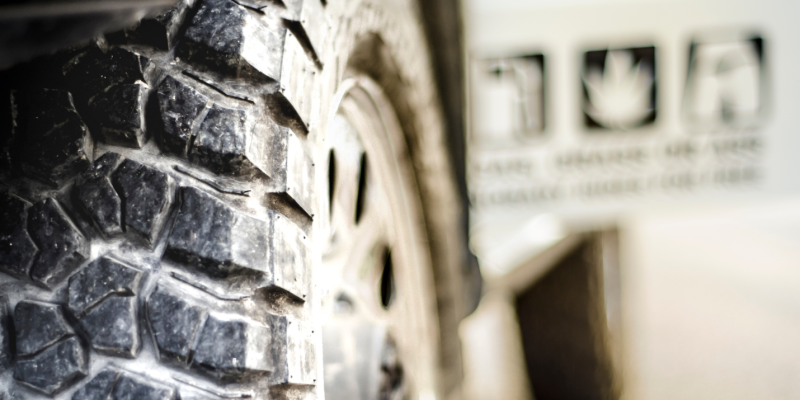Jeeps are built to last. From the rocky terrain of off-road trails to the daily grind of city streets, these rugged vehicles are made for adventure and endurance. But once your Jeep crosses that 100,000-mile threshold, proper maintenance becomes even more essential. High mileage doesn’t mean the end of the road—it just means your Jeep needs a bit more care to keep performing at its best.
Whether you drive a Wrangler, Cherokee, Grand Cherokee, or Gladiator, here are some must-do maintenance tips every high-mileage Jeep owner should follow to extend the life and reliability of their rig.
1. Change Fluids More Frequently
As your Jeep ages, internal components experience more friction and wear. Fresh fluids help mitigate that wear by keeping systems lubricated and operating smoothly. Key fluids to prioritize include:
- Engine oil: Stick to a consistent oil change schedule based on driving habits and engine type. Consider switching to high-mileage synthetic oil, which includes additives to condition seals and reduce leaks.
- Transmission fluid: Old or burnt fluid can lead to slipping gears, overheating, and poor performance. Have it checked regularly and consider a fluid and filter change if it hasn’t been serviced in the last 30,000–60,000 miles.
- Differential and transfer case fluid: Off-road use or towing accelerates wear in these areas. Clean, fresh fluid helps prevent grinding, overheating, and gear damage.
- Brake fluid and power steering fluid: These are often overlooked but crucial for responsive handling and braking performance.
If you’re unsure what needs attention, a qualified jeep repair shop can inspect all major fluid systems and provide service recommendations based on your Jeep’s mileage and use.
2. Inspect and Replace Worn Suspension Components
The suspension system on any Jeep takes a beating—especially on vehicles that have been off-road or driven on rough roads. As mileage increases, so does the risk of worn-out bushings, ball joints, shocks, and control arms.
Symptoms of a tired suspension include:
- Clunky or squeaky noises when driving over bumps
- Excessive body roll or instability when turning
- Uneven tire wear
- A bouncy or overly stiff ride
Regularly inspecting suspension components and replacing worn parts will not only improve ride quality but also help protect steering and braking systems from additional strain.
3. Keep a Close Eye on Belts, Hoses, and Gaskets
Rubber components deteriorate over time, and once your Jeep hits high mileage, they’re more prone to cracking, hardening, or leaking. Drive belts, radiator hoses, vacuum lines, and gaskets should all be inspected for signs of wear or leaks.
Common signs of failing belts and hoses include:
- Whining or chirping noises under the hood
- Visible cracks or fraying
- Coolant or oil leaks around the engine bay
Catching these early can prevent overheating, breakdowns, or even catastrophic engine damage. A proactive replacement schedule is far cheaper than emergency repairs on the side of the trail.
4. Monitor Electrical and Sensor Functionality
Older Jeeps often develop electrical gremlins—small issues with sensors, wiring, or dashboard components that start to go haywire with age. Oxygen sensors, throttle position sensors, and mass airflow sensors are particularly common failure points.
In high-mileage Jeeps, intermittent check engine lights, misfires, or erratic fuel economy may stem from aging sensors or corroded wiring connections.
Have a technician scan your system with a diagnostic tool if you’re seeing warning lights or experiencing performance drops. Addressing electrical issues early can save you from drivability problems and help keep your fuel economy in check.
5. Stay on Top of Tire Alignment, Balancing, and Rotation
Tires are a major investment—especially for Jeeps running aggressive all-terrain or mud-terrain rubber. Misalignment, worn suspension components, or unbalanced wheels can lead to uneven tire wear and reduced off-road capability.
Rotating your tires every 5,000–7,500 miles ensures even wear, while regular alignment checks help maintain proper handling and steering response. If your steering feels off-center, your Jeep pulls to one side, or your tires wear unevenly, it’s time for a professional alignment.
Maintaining your tires and alignment is not only safer but also saves money in the long run by prolonging tire life and preventing added stress on the suspension.
6. Consider Preventative Repairs Before They’re Urgent
High-mileage Jeeps often experience “snowball” problems—one issue leads to another, and soon you’re dealing with major repairs. To avoid this, consider replacing known weak points preemptively. These may include:
- Water pumps
- Radiators
- Fuel pumps
- Ignition coils
- Alternators
If you plan on keeping your Jeep long-term, replacing these before failure can improve reliability and prevent unexpected breakdowns on the road or trail.
Reaching high mileage in a Jeep is a badge of honor—it means you’ve made the most of your adventures. But with that badge comes responsibility. Proactive, high-mileage maintenance is key to squeezing every last mile from your rig without sacrificing reliability or safety.
If you’re unsure where to begin, or if your Jeep is showing signs of age, a trusted jeep repair shop can provide expert guidance and prioritize services to keep you on the road—or off it—for years to come.












Comments